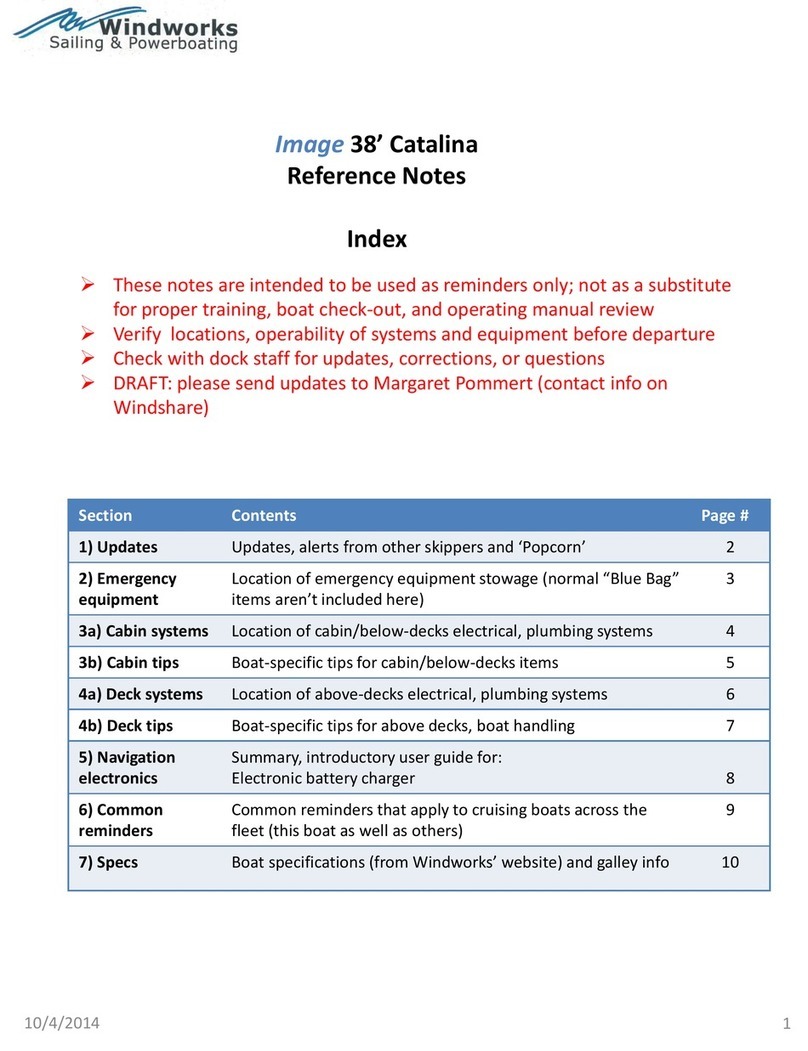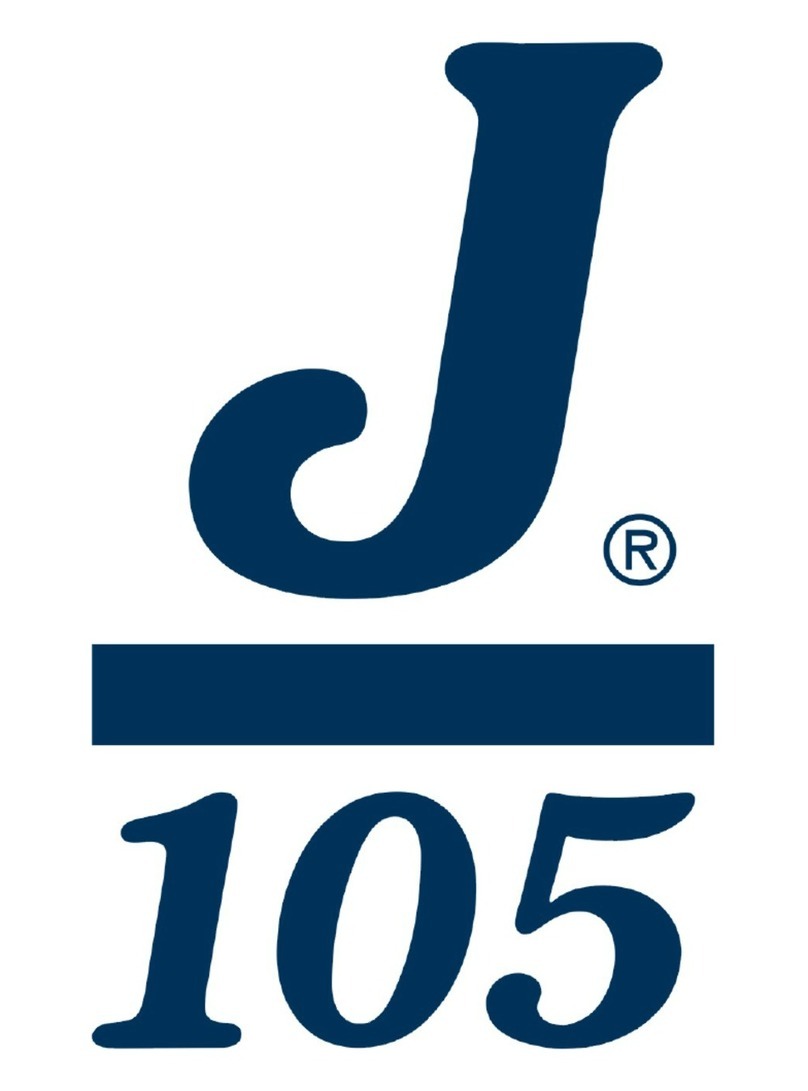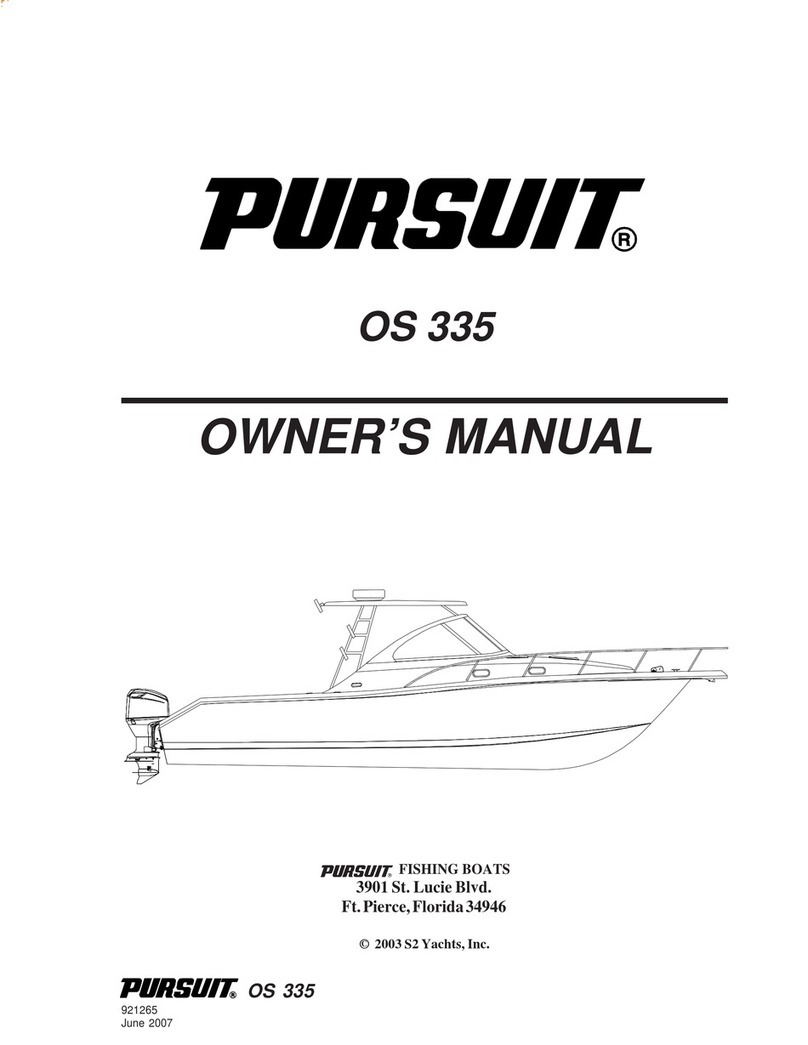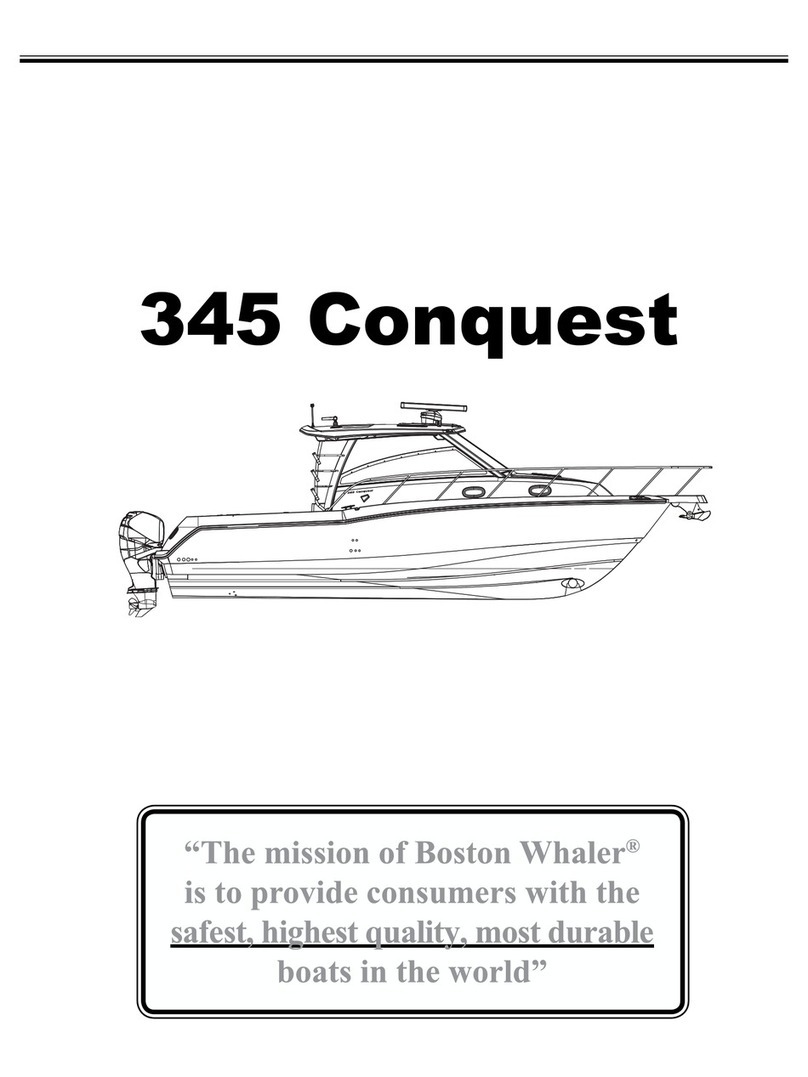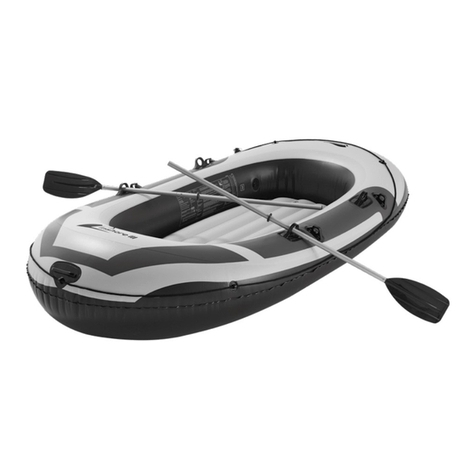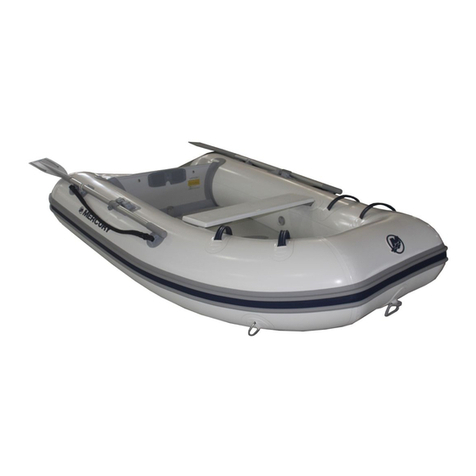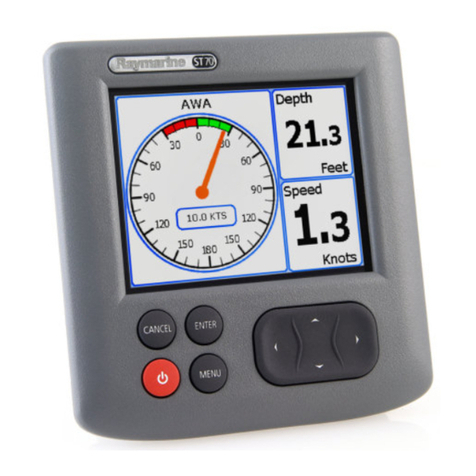Sienne Jeanneau International 50 User manual

Jeanneau International 50
SIENNE
OPERATION MANUAL

1
Welcome Aboard!
We are happy that you have chosen Ship Harbor Yacht Charters and
the vessel, Sienne, for your vacation. We hope you enjoy your
cruising experience in the lovely islands of the Pacific Northwest.
This manual will help you become more familiar with your boat. If you
have any further questions, about the boat or your itinerary, please do
not hesitate to ask the SHYC staff.
Remember our vessels are non-smoking boats. .
Bon Voyage!
The Ship Harbor Yacht Charters Staff

2
TABLE OF CONTENTS
Boat Operation Page
Engine Inspection 3
Start-Up
Shutdown
Getting Underway 4
Cruising
Docking
Fueling
Boat Electrical
A.C. (Shore) Power 5-6
Inverter
D.C. (House) Systems
Batteries
Sanitation System 6
Marine Toilet
Holding Tank(s)
Y-Valve
Water Systems 7
Fresh Water Tanks
Fresh Water Pump
Hot Water
Shower
Galley 8
Propane
Refrigeration/ Freezer
Stove/ Oven
Heating Systems 9
Diesel Heater (DC)
Electric Heater
Electronics 9
VHF Radio
Auto Pilot
Tridata
Wind System
GPS/Plotter
DVD/CD Stereo AM/FM Radio
Anchoring 10
Sails and Rigging
BBQ
Dinghy/Outboard 11
Other Notes
Safety Precautions
Bilge Pumps
Engine Spares
Crabbing
Serial/Part Numbers
Thru-Hull Diagram 14
Fill and pump out diagram 15

3
BOAT OPERATION
Engine Inspection
Remember your “WOBBS” every morning. (Water (Coolant), Oil, Bilges (Inspect and
Pump-out), Belts, and Sea Strainer. Check the level of COOLANT in the expansion
tank. Check the level of your engine oil with the dipstick. Your dipstick is located on
the port side of the engine block. Look at the etch mark on the dipstick that
indicates proper level. DO NOT OVERFILL! Fill only if oil level is below the ½ mark.
Check the general condition of the hoses and belts.
Ensure the RAW WATER THRU-HULL is OPEN! (Lever position in-line with valve).
Check the sea strainer for debris. If necessary, close the thru-hull, open the strainer
lid, clean out debris, and reassemble. REOPEN THE THRU-HULL!
Start Up
SIENNE has a 90 hp Perkins diesel engine with a 3 bladed prop. There is an ignition,
throttle and transmission control in the cockpit. The vessel cruises at 1800 rpm to a
speed of 7.5 knots depending on water conditions. Running your engine much above
2000 will burn a lot more diesel with very little gain in boat speed.
The boat has a definite prop walk to port in reverse with little effect in forward.
When in reverse, be careful to keep a firm grip on the wheel. Use only low rpms in
reverse.
To start engine: Place transmission in the neutral position by placing the shift arm in
the straight-up position with the red button depressed. Turn the ignition switch on
and leave on while engine is running. Your oil and temperature alarms will sound.
Push the ignition button (~ 1/2" diameter) in. The engine should start immediately.
Depress the red button on the throttle and increase the rpm to 1100 to clear the
warning lights and then back the throttle to 1000 rpm. Immediately check for water
exiting the exhaust at starboard side aft. This is an indicator that the thru-hull is
open and that water is keeping the engine cool.
Do not hold the ignition key in for more than 5 seconds at a time. If the engine does
not start the first time, wait about 15 seconds before trying again. NEVER TURN OFF
THE KEY WHILE ENGINE IS RUNNING!
After the engine starts, warm it up at about 1000 rpms for about 5 minutes.
Observe that no warning lights are illuminated and no alarms are sounding. If so,
shut down the engine and assess the situation for a potential problem. (Note: Was
there a lack of water exiting with exhaust? Are thru-hulls open and debris cleared
from sea-strainer? If a problem continues to occur, call SHYC Service.)

4
Shut Down
Before shutting the engine down, let it cool for 5 minutes at idle and transmission in
neutral. Turn off the engine by lifting the "Kill" "T" handle. Then switch the ignition
to the off position. DO NOT TURN OFF THE IGNITION SWITCH FIRST!
Getting Underway
Disconnect the shore power cord (see AC Power next page). Close portholes,
windows, and hatches. Turn on VHF, auto pilot and electronics. Assign crew
members to their tasks. Put one crew member (the “dinghiest” member of course!)
in charge of the dinghy if it is under tow. It needs to be kept on a tight leash when
in the marina. Once outside marina, have your crew members bring in fenders and
put lines away.
Cruising
Slowly bring the engine up to a speed of 2400 rpm where you will cruise at approx.
6-8 knots SOG (Speed-Over-Ground) using only about .75 gallons of diesel/hour.
Using excessive rpms will only give you a ½ knot gain in speed and will damage the
engine. Speed will vary depending on weight, load, weather, and water conditions.
Docking
During docking, give clear instructions to the crew on what you will expect of them
(i.e. lines and fenders, dinghy). Always come into the dock slowly allowing for any
wind or tide. If you have a choice, dock on the port side because as you put the
transmission in reverse, the boat will pull to port drawing you in closer to the dock.
Have the bow, stern, and spring lines ready. If you are short on crew, lead the lines
to the midsection of the boat (where it is widest) where your crew member can
easily step off with one of the lines, secure it, and quickly grab the next one.
As you are approaching the dock, have your crew call out distances to the captain
(i.e. 20 feet, 10 feet, 3 feet etc.). This will help with a successful landing.
If you find you are too far from the dock, DO NOT ALLOW YOUR CREW TO JUMP!
Back out and try it again. Disaster may follow if someone falls into the water.
Fueling Up
You will need to top-off the fuel tank upon completion of your charter. Your fuel
tanks hold 70 gallons each or a total of 140 gallons. You should have a rough idea of
the number of gallons you will need to add to your tank. (I.e. if you use .75 gal per
hour and have run 20 hours: .75gph x 20h = 15 gal)
Open the fuel filler cap (2) located on the transom, port side, with the key located in
the Nav Station or a winch handle. MAKE SURE YOU HAVE DIESEL! Make sure fuel
is going into the right deck fill! DOUBLE-CHECK! Before pumping, have your oil/fuel
sorb ready to soak up any spilled fuel. Do not add water at the same time.
Put the DIESEL nozzle into the deck fitting and pump slowly listening to the sound of
the flow. Pumping too fast may not allow excess air to escape, which will lead to
spillage out the vent. As the tank fills, the sound will rise in pitch or gurgle. Pay
Table of contents
Popular Boat manuals by other brands

Jeanneau
Jeanneau SUN ODYSSEY 41 DS owner's manual
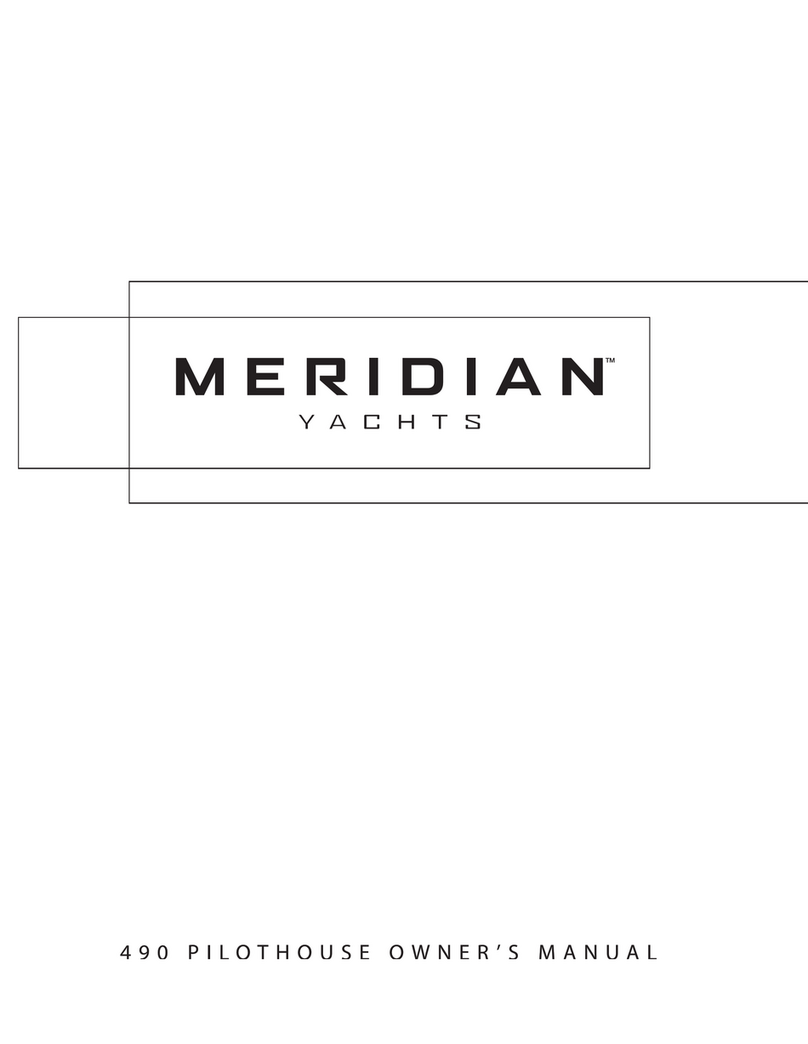
Meridian
Meridian 490 Pilothouse owner's manual
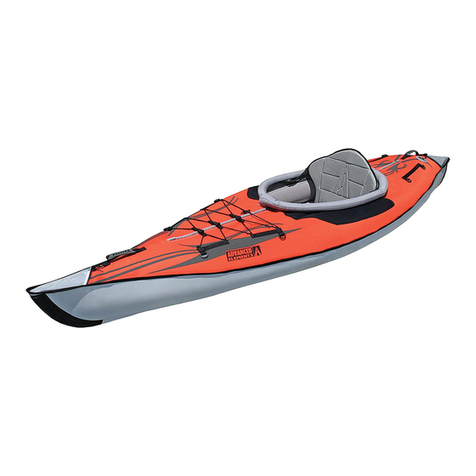
Advanced Elements
Advanced Elements AdvancedFrame Expedition AE1009 owner's manual
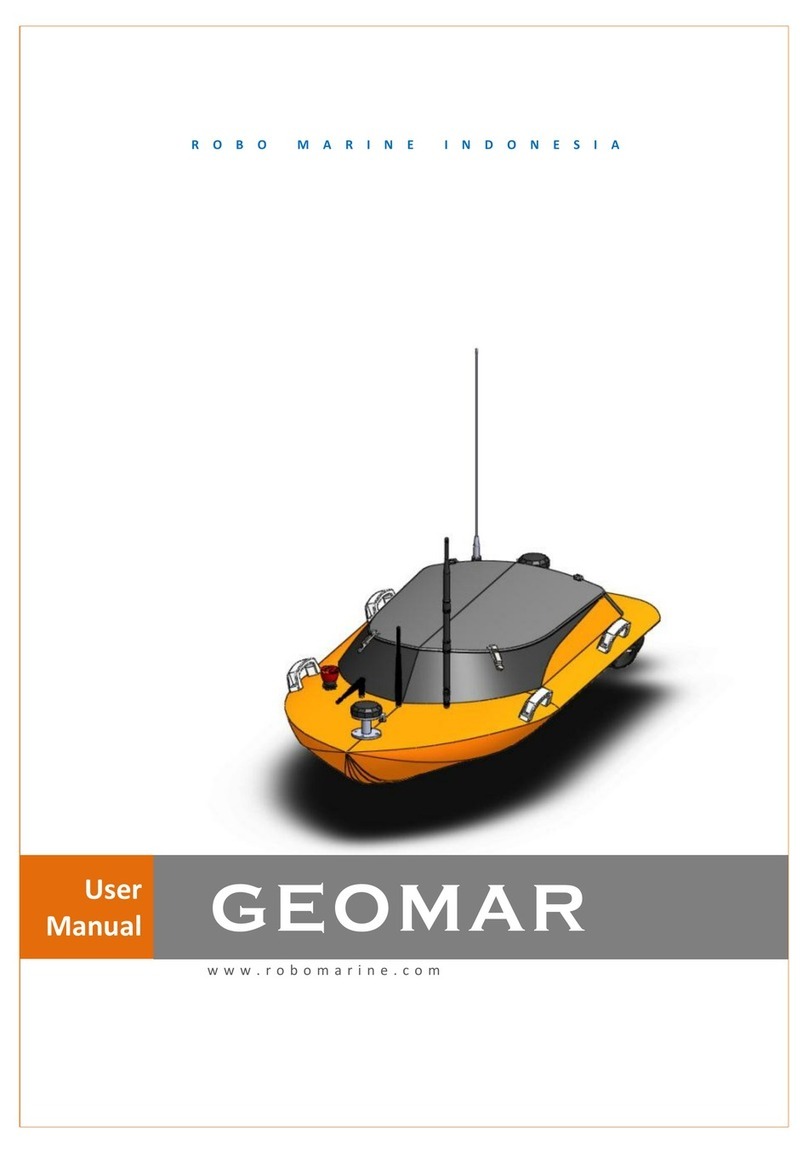
Robo Marine Indonesia
Robo Marine Indonesia GEOMAR user manual
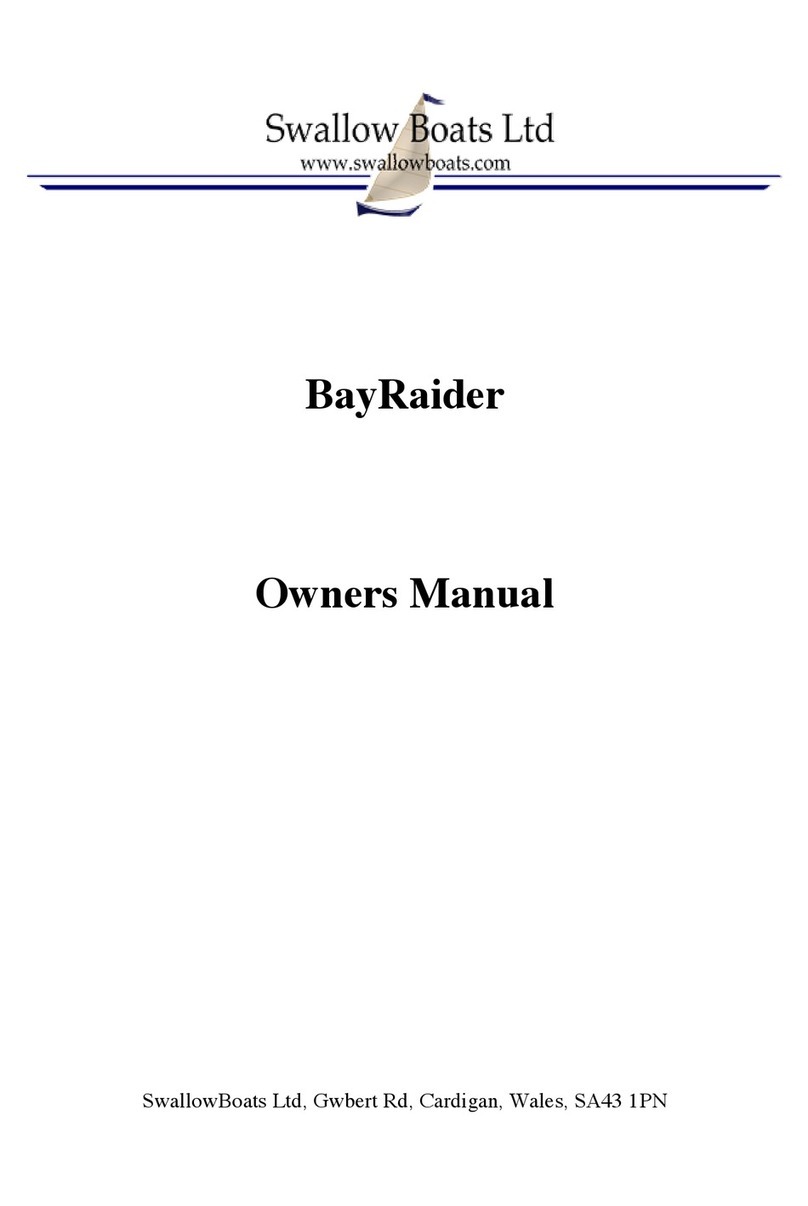
Swallow Boats
Swallow Boats BayRaider owner's manual
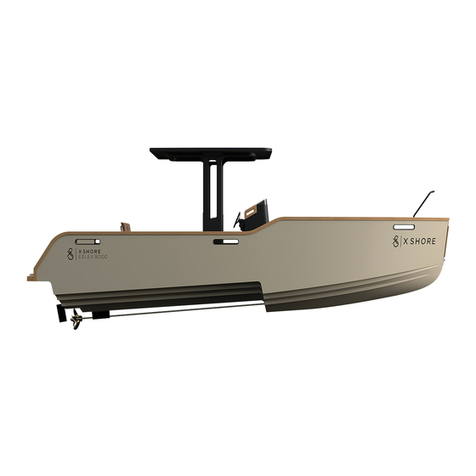
X SHORE
X SHORE EELEX 8000 owner's manual
